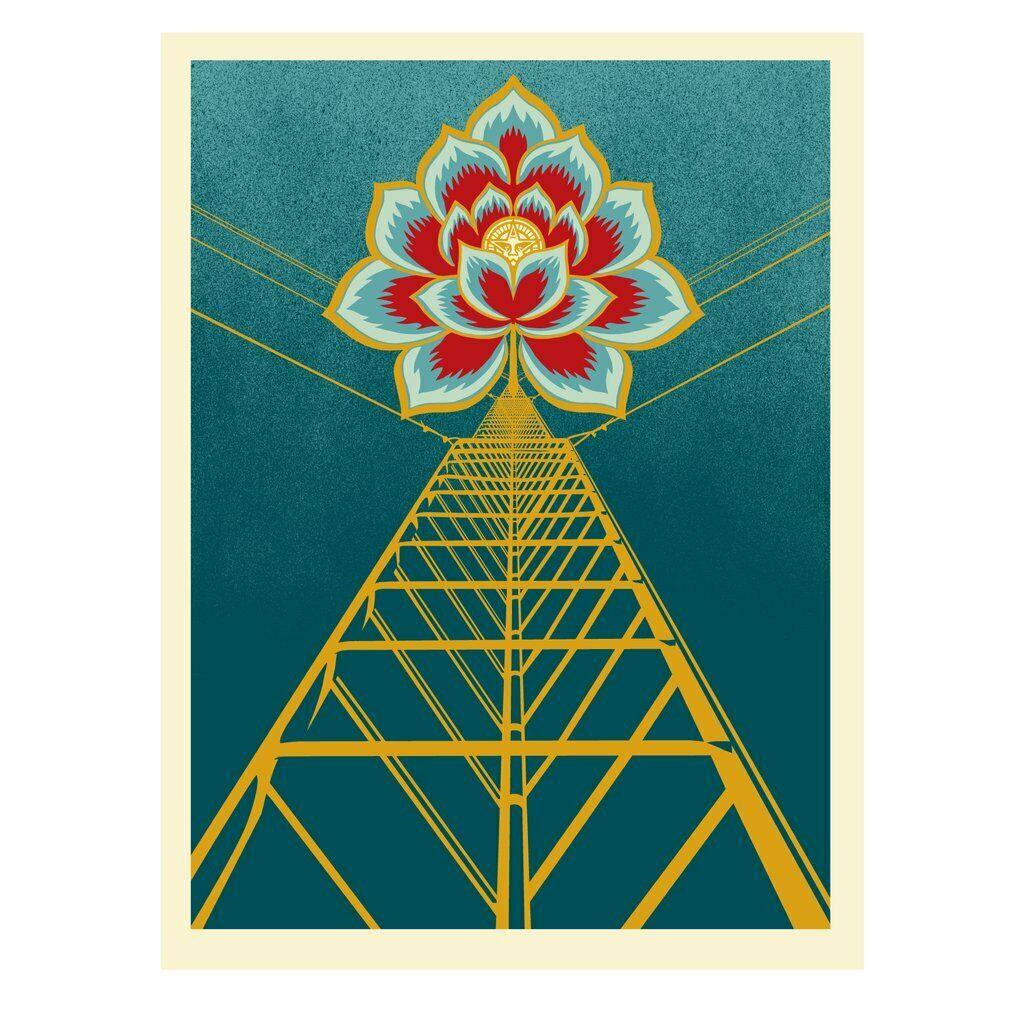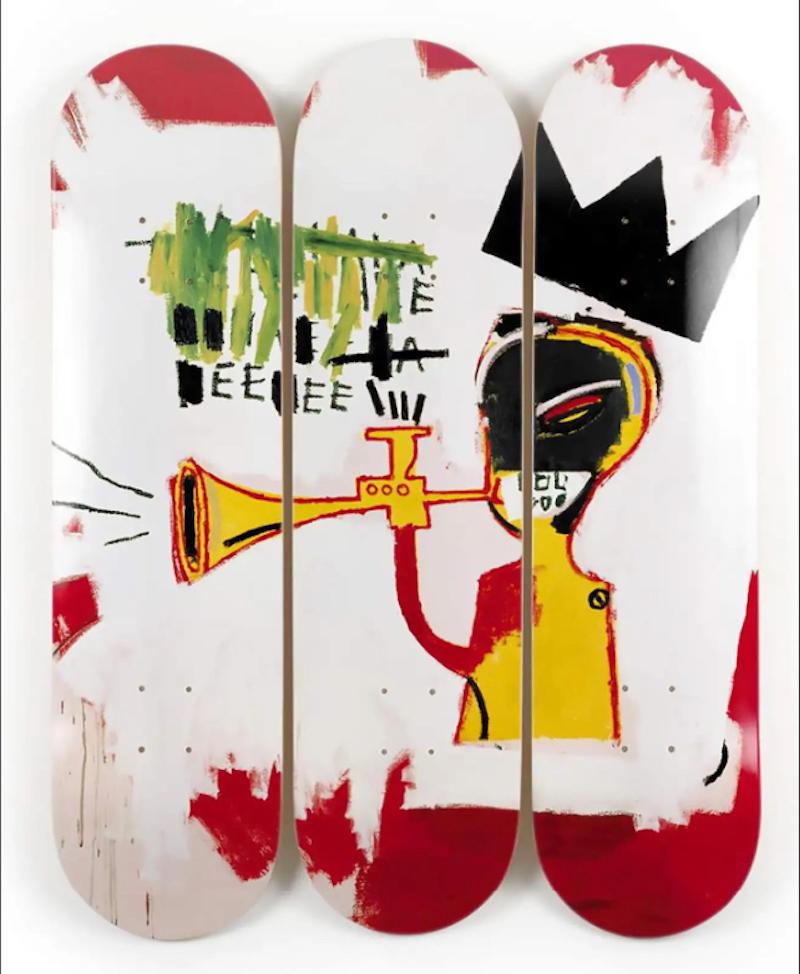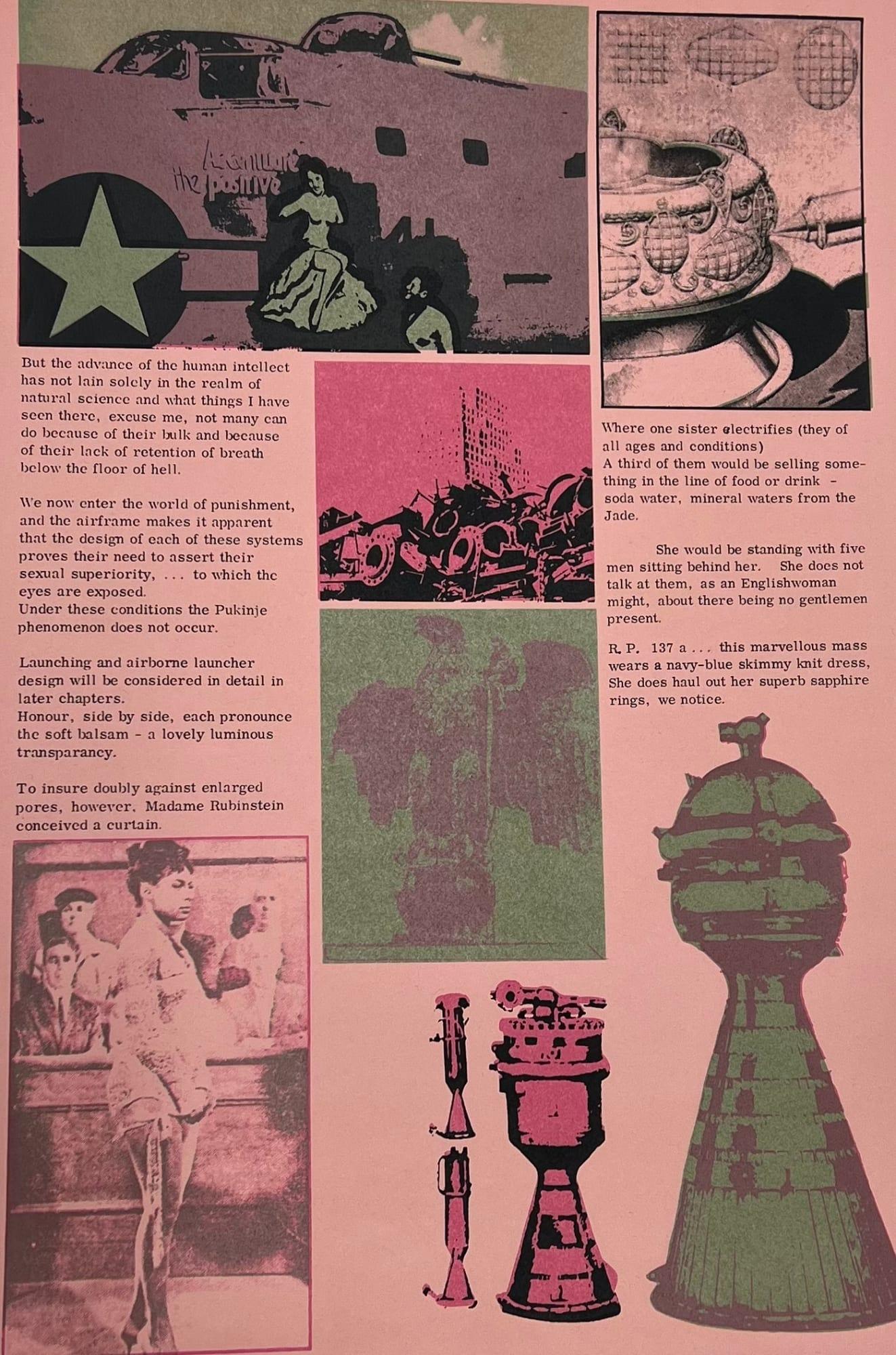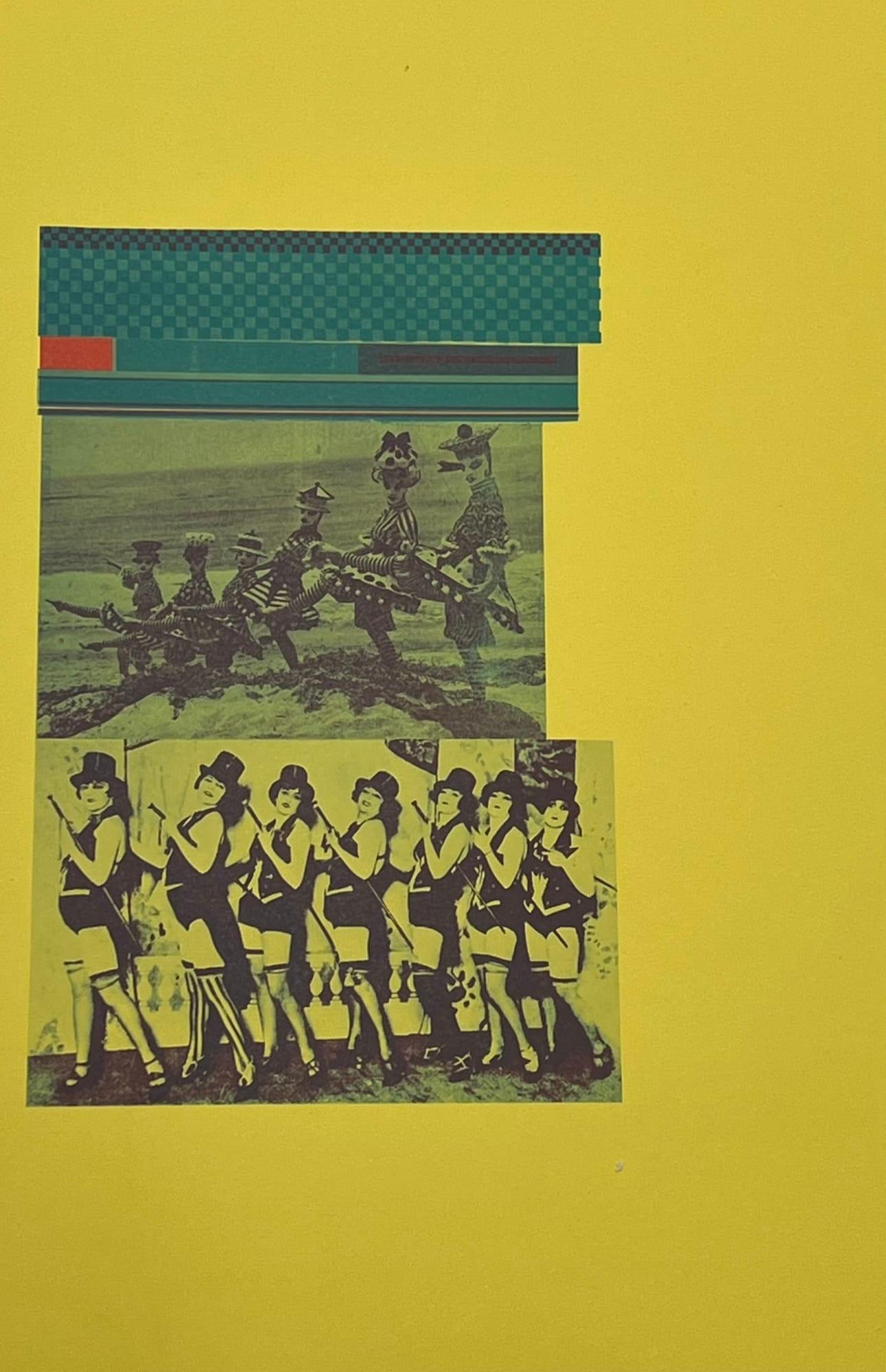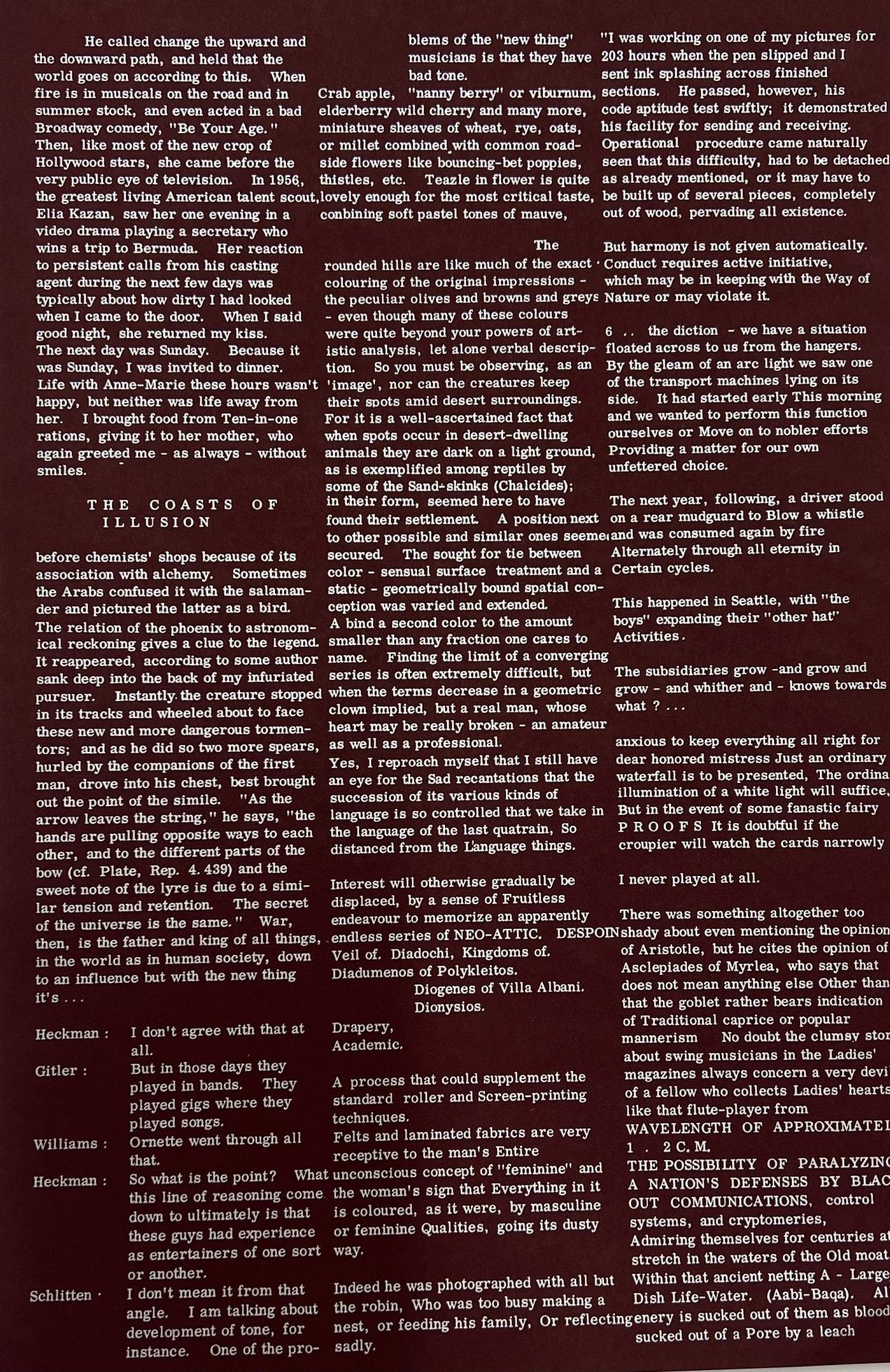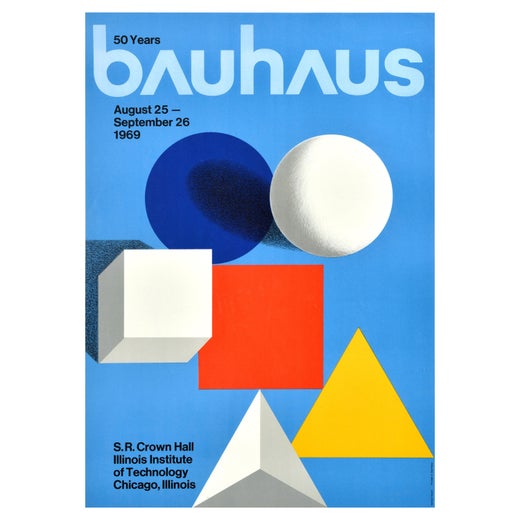Herbert BayerThings to Come tray2018
2018
About the Item
- Creator:Herbert Bayer (1900-1985, Austrian, American)
- Creation Year:2018
- Dimensions:Height: 5.5 in (13.97 cm)Width: 5.5 in (13.97 cm)
- Medium:
- Movement & Style:
- Period:
- Condition:Excellent; held in the original box (outer box has some wear; work itself is excellent).
- Gallery Location:New York, NY
- Reference Number:1stDibs: LU1745213699442
Herbert Bayer
The Austrian-born Herbert Bayer is widely acknowledged as one of the most influential graphic artists of his time, but his extensive achievements span a spectrum of disciplines. The artistic polymath made his mark as a photographer and master of photomontage, a typography creator, magazine art director, advertising guru, architect and more.
As a student in the early 1920s at the Bauhaus — the revolutionary German art and design school in Weimar that sought to integrate art and design into daily life — Bayer studied under Russian-born Wassily Kandisnsky, who became his mentor, and was greatly influenced by Kandinsky’s book Concerning the Spiritual in Art, heartily embracing its premise that the arts can and should serve society.
Bayer left the Bauhaus in 1923 to tour Italy with a friend, then rejoined two years later, hired to teach advertising, design and typography at the school’s new home, in Dessau. There, he designed catalogues, featuring photography and machine-based printing, that promoted Bauhaus-made “goods for the home,” including handmade furniture, wallpaper and housewares. And he created a new “universal” alphabet: a streamlined sans serif restricted to lower-case letters that became the Bauhaus’s signature font.
Bayer quit teaching at the Bauhaus along with founder Walter Gropius and fellow teachers Marcel Breuer and László Maholy-Nagy when the school’s finances grew strained. He became the art director of German Vogue, moving on, when the magazine closed during the Depression, to the ad agency Dorland International, where he created the advertisements for clothing, textiles, toothpaste and nose drops on view. He also did magazine covers and outdoor billboards and masterminded the design of several important international exhibitions, including the German section of the 1930 Exposition de la Société des artistes décorateurs in Paris.
By 1938, Bayer had become dismayed by the political situation in Germany, and at the invitation of Gropius — who was then chair of the architecture department at Harvard, having fled the Nazi regime in 1934 — he left for the United States. Gropius had been asked to curate an exhibition on the Bauhaus for the Museum of Modern Art, but he didn’t have time and so asked Bayer to help. Bayer ultimately did it all, including gathering material in Germany, creating the exhibition plan and overseeing the catalogue. The show traveled throughout the U.S., and Bayer’s stateside career took off.
In the early 1940s, Bayer served as chief art director at Wanamaker’s and worked in advertising and package design at J. Walter Thompson. In 1945, he began a long stint working full-time at the Container Corporation of America (CCA). He created CCA’s long-running series “Great Ideas of Western Man,” which aimed to enlighten the public through inspiring quotes. Additionally, Bayer designed sculptures, wall murals, furniture, earth art and buildings for the Aspen Institute between 1946 and 1975.
Bayer’s work demonstrates how one man, and one school, changed the evolution of contemporary graphics in America over a 40-year period.
Find original Herbert Bayer prints and paintings on 1stDibs.
- ShippingRetrieving quote...Ships From: New York, NY
- Return PolicyA return for this item may be initiated within 1 day of delivery.
- Guggenheim Museum BilbaoBy Richard HaasLocated in New York, NYIncised signature in aluminum, annotated "Artists Proof" and titled; ink on top smudged If you've ever visited the Guggenheim Bilbao, you should get ...Category
Early 2000s Realist Figurative Prints
MaterialsMetal
- FALCO Dance Co., Aspen Rare rainbow color silkscreen (hand signed & Inscribed)By Robert IndianaLocated in New York, NYRobert Indiana FALCO Dance Company (Hand Signed/Dedicated), 1968 Silkscreen on metallic and wove paper Hand signed by Robert Indiana with personal inscription on the front Unframed T...Category
1960s Pop Art Abstract Prints
MaterialsFoil
- Wrapped Monument to Vittorio Emanuele II (HC hand signed by Christo), Hugo MulasBy Christo and Jeanne-ClaudeLocated in New York, NYChristo and Jeanne-Claude, Ugo Mulas Wrapped Monument to Vittorio Emanuele II (Hand Signed by Christo) Gelatin silver print on thin board Hand signed and annotated H.C. (Hors Commer...Category
1970s Pop Art Figurative Prints
MaterialsSilver Gelatin, Mixed Media, Pencil, Lithograph, Screen
- Doll, Limited Edition Skate DeckBy Paul McCarthyLocated in New York, NYPaul McCarthy Doll, Limited Edition Skate Deck, 2016 Silkscreen on 7-Ply Canadian Maplewood Skate Deck. Numbered from the edition of 250. Signed on the deck. (Printed). Numbered from...Category
2010s Pop Art Mixed Media
MaterialsWood, Mixed Media, Screen
- Aufbruch Aus Moskau MockBa: Suite of 20 signed prints top Russian artists 64/100Located in New York, NYVARIOUS ARTISTS AUFBRUCH AUS MOSKAU MOCKBA - PORTFOLIO OF TWENTY (20) ORIGINAL LIMITED EDITION SIGNED GRAPHICS, 1990 20 Limited edition, hand signed and numbered Screenprints, unfram...Category
1990s Pop Art Abstract Prints
MaterialsMixed Media, Screen, Linen, Pencil
- Portrait of Jean-Michel Basquiat: Monotype (unique work, hand signed twice)By Richard CormanLocated in New York, NYRichard Corman Portrait of Jean-Michel Basquiat: Monotype (hand signed twice by Richard Corman), 2015 Silkscreen monotype on 320 gram Coventry Rag paper with deckled edges Signed twi...Category
2010s Pop Art Figurative Prints
MaterialsScreen, Monotype, Felt Pen, Mixed Media
- Flower Power Print By Shepard Fairey Singed & Numbered Gold Metallic Inks ObeyBy Shepard FaireyLocated in Draper, UTThese Flower Power prints are a symbolic urge for a concerted effort to transition off of fossil fuels and to sustainable energy sources. Life, as we know it on Earth, will depend on...Category
2010s Street Art Figurative Prints
MaterialsGold
- The souper dressBy Andy WarholLocated in Jerusalem, ILA wonderful piece of unknown edition by Andy Warhol. A silkscreen print on a Cellulose and Cotton dress. Fearing the artist's trade mark Campbell's soup can. In very good condition.Category
1960s Pop Art Figurative Prints
MaterialsTextile, Screen
- UntitledBy Jean-Michel BasquiatLocated in New York, NYJean-Michel Basquiat, Untitled, 2014 Screenprints in color on three individual maple wood skate decks With artist's printed signature on verso 31 x 8 in. (78.7 x 20.3 cm), each, unfr...Category
21st Century and Contemporary More Art
MaterialsWood, Screen
- Human Intellect - Moonstrips Empire News 1967 By Eduardo PaolozziBy Eduardo PaolozziLocated in London, GBHuman Intellect - Moonstrips Empire News 1967 By Eduardo Paolozzi Eduardo Paolozzi (1924-2005) was a pioneering Scottish artist and sculptor associated with the Pop Art movement. R...Category
1960s Contemporary Figurative Prints
MaterialsScreen
- Untitled - From General Fun By Eduardo PaolozziBy Eduardo PaolozziLocated in London, GBUntitled - From General Fun By Eduardo Paolozzi Eduardo Paolozzi (1924-2005) was a pioneering Scottish artist and sculptor associated with the Pop Art movement. Renowned for his co...Category
1970s Contemporary Figurative Prints
MaterialsScreen
- Coasts Of Illusion - Moonstrips Empire News By Eduardo PaolozziBy Eduardo PaolozziLocated in London, GBCoasts Of Illusion - Moonstrips Empire News By Eduardo Paolozzi Eduardo Paolozzi (1924-2005) was a pioneering Scottish artist and sculptor associated with the Pop Art movement. Ren...Category
1960s Contemporary Figurative Prints
MaterialsScreen
Recently Viewed
View AllRead More
The Creative Genius of Bauhaus Master Herbert Bayer Knew No Boundaries
An exhibition at Manhattan's Cooper Hewitt Smithsonian Design Museum shows the German artistic polymath in a new light.
Welcome (Back) to the Wild, Wonderful World of Walasse Ting
Americans are rediscovering the globe-trotting painter and poet, who was connected to all sorts of art movements across a long and varied career.
